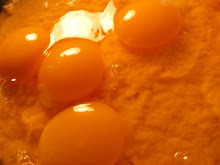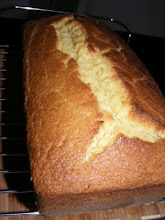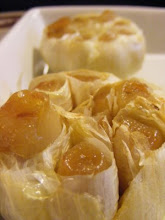Okay, this may seem a little basic but I never know who is looking in at my blog or what level of knowledge they have about cooking so I thought I would go through the process for cooking pasta properly. Is there a proper way to cook pasta? Well...if you want pasta that isn't sticky, chewy or mushy, yes there is.
"El dente" is the term given to pasta that is still slightly firm after it is cooked. It isn't chewy or hard at all, just a little firm. Pasta that is cooked past el dente is on the soft and mushy side. Not only that, it loses flavor when it is overcooked.
How do you know when your pasta is el dente? Well...you taste it periodically throughout the cooking process to "feel" the level of doneness. When it feels cooked and it had a nice bite, it's ready. After you do this a few times when you cook pasta you will gain a sense of when your pasta is ready.
Here's the process for cooking dried linguine:
"El dente" is the term given to pasta that is still slightly firm after it is cooked. It isn't chewy or hard at all, just a little firm. Pasta that is cooked past el dente is on the soft and mushy side. Not only that, it loses flavor when it is overcooked.
How do you know when your pasta is el dente? Well...you taste it periodically throughout the cooking process to "feel" the level of doneness. When it feels cooked and it had a nice bite, it's ready. After you do this a few times when you cook pasta you will gain a sense of when your pasta is ready.
Here's the process for cooking dried linguine:

Fill a large pot with cold water. Add some salt and a little oil to the water. The salt is to add flavor to the pasta as it cooks and the oil is to prevent the pot from boiling over. That last point is one of contention. The truth is that you really don't need oil in the water at all, but I still do it out of habit. How stupid is that?!

Add the linguine to the water.
Be sure the linguine is totally submersed in the water and give it a stir to ensure that none of it is sticking together in clumps. After a few moments stir the pasts again to prevent clumping.

Here is how the pasta looks at about the half way mark. Notice that it is soft. Is it done yet? Let's take a closer look!
True, the pasta is softer than when it went into the pot, but that doesn't mean it's cooked. Notice the yellow color and the waxy appearance. This pasts is still way too firm to eat and it would taste starchy and chewy. Better leave it in for a while longer!
Now look at the pasta. It is softer, lighter in color and slick looking. It's ready!

Strain the pasta in a large colander. DO NOT RUN COLD WATER OVER IT!!! Allow the water to run off the pasta without washing with cold water. If you rinse the pasts you will wash away the surface starch and the sauce will not stick the it. The only time you rinse pasta as if you are making pasta salad.

















































































7 comments:
and I always thought rinsing my pasta in cold water was the right way to make it. Next time, i'll try it your way.
Well...air drying is the way most good Italian chefs cool cooked pasta. You can make it the day ahead if you want and then store it in the fridge with a wet towel over it.
Always add your pasta to your sauce and heat it that way. It will absorb some of the sauce and taste better. If it's wet from being rinsed, the sauce will run off and pool on the plate.
your way worked out well.
GOOD!!!!
who knew?
what about the throw it on the wall and see if it sticks routine?
Um...nah!
Post a Comment